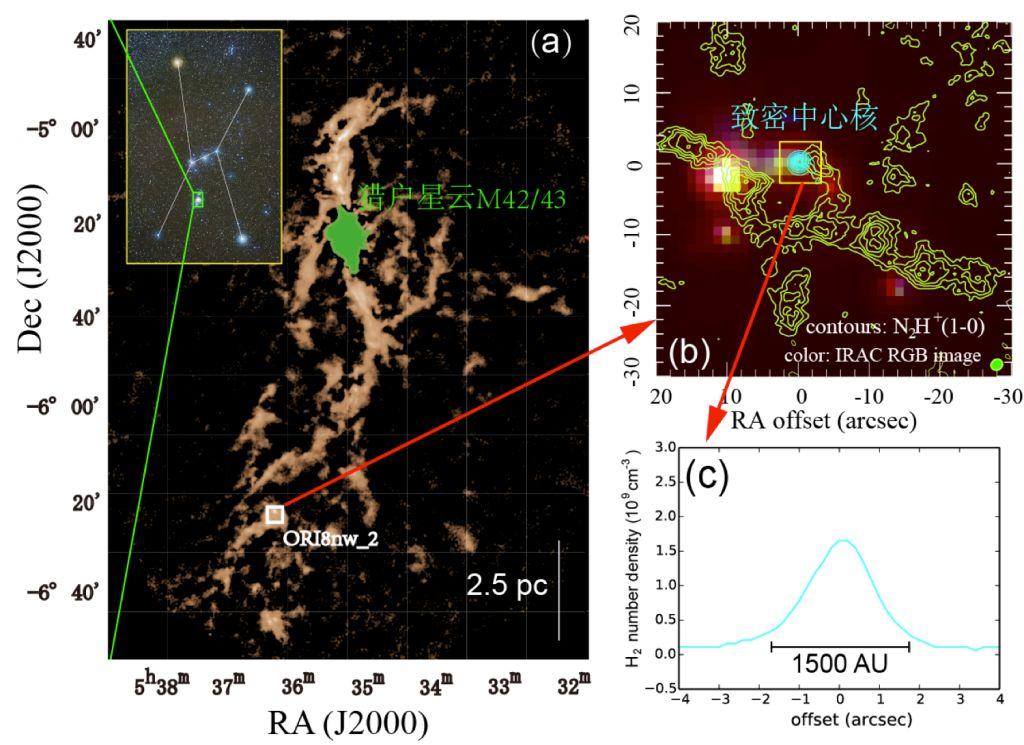The Orion Molecular Cloud is the closest star forming site which is in the vicinity of an OB cluster. Its entire system contains ample resources that are used in the process of star formation at different mass scales and evolutionary stages. Numerous observations have been performed to explore its physical properties, which include measuring the large scale gas distribution, identifying individual young stellar objects (YSOs), and modeling stellar feedback from the OB cluster.
Dr. Z. Ren and Dr. D. Li from the "ISM evolution and star formation" group recently performed a high-resolution (1.5 arcsec) observational study towards two massive dust-and-gas cores, ORI8nw_2 and ORI2_6, in the Orion Molecular Cloud using the Combined Array for Research in Millimeter-wave Astronomy (CARMA). In each region, the 3.2 mm continuum emission exhibits a dense, compact dust core at the center containing 1 to 3 solar masses. The cores have number densities exceeding 10^9 cm^-3, which are among the highest densities observed in star-forming cores. In both regions the N2H+ shows clumpy structures which are spatially displaced from the densest gas which should indicate ongoing fragmentation in the core. In OIR8nw_2 in particular, the N2H+ shows a noticeable filament structure with a central cavity shell. Also, the extremely high density at the core's center suggests the super-Jeans condition is present and there is a possibility for further fragmentation. This may lead to the formation of a multiple star system in a small volume. Dr. N. Chapman from Northwest University is a collaborator in this work.

Address: 20A Datun Road, Chaoyang District, Beijing, China code: 100012
Tel: 010-64888708 E-mail: naoc@nao.cas.cn


